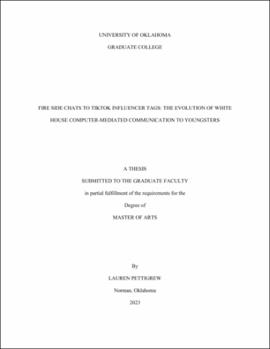| dc.description.abstract | This study aimed to analyze how young people understood emerging changes in White House communication, specifically that which utilized the collaboration of social media influencers. Convenience sampling was used to recruit participants at an American college. A total of 111 students participated in the study that showed two different videos of social media influencers at the White House, followed by questions that measured credibility, accommodation, and effects of messaging. The videos featured different levels of formality, as well as different aesthetics. Results revealed that these collaborative videos did not produce high levels of credibility, accommodation or gateway effects, but the less informal video prompted greater credibility, accommodation, and gateway effects than the more informal video. Collectively, these results indicate that White House and social media influencer collaborations in their current form as not incredibility persuasive and future research is needed to better understand if and how these collaborations can be altered to be more effective at reaching and influencing young adults. | en_US |
